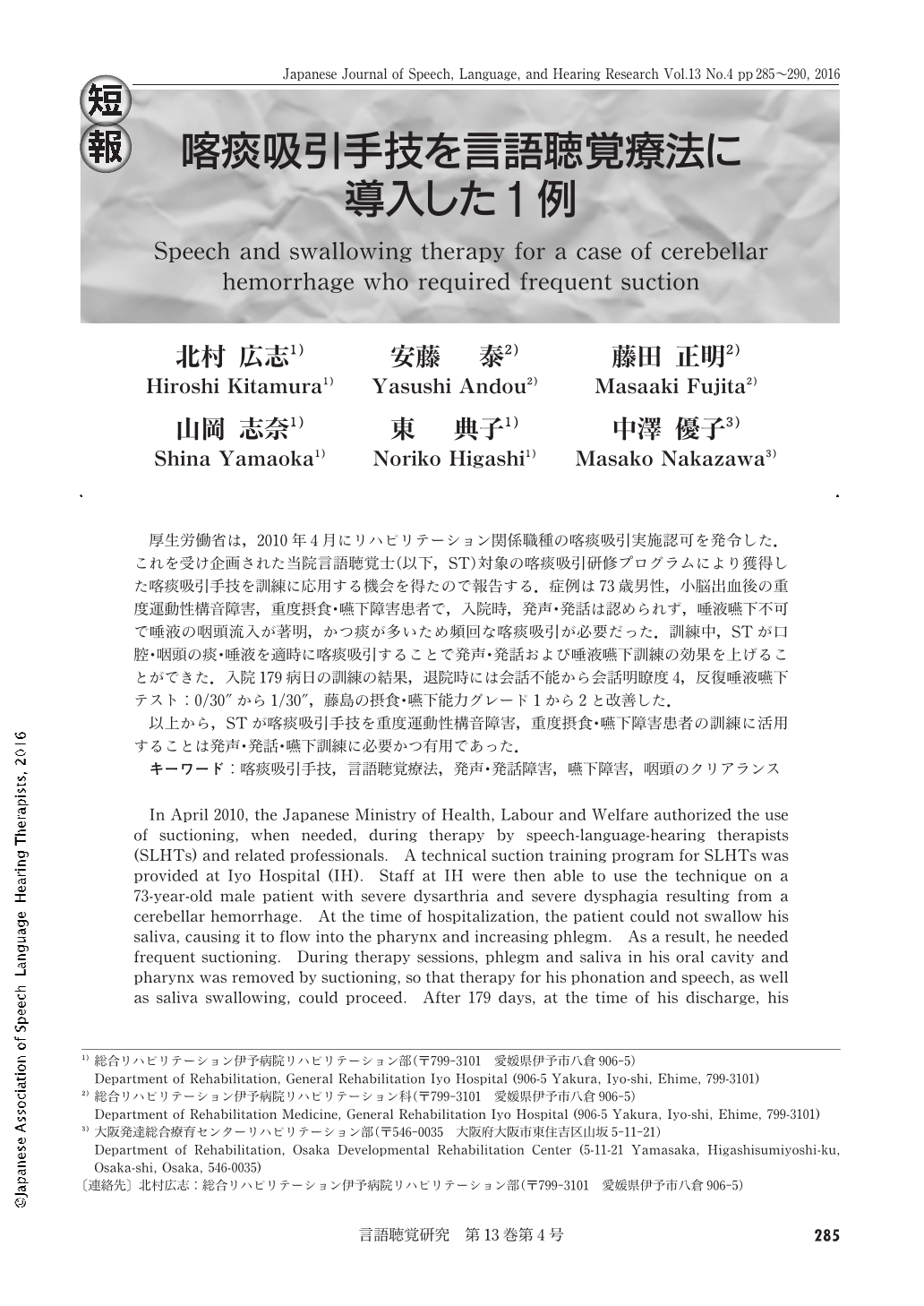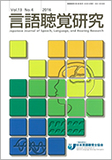Japanese
English
- 有料閲覧
- Abstract 文献概要
- 1ページ目 Look Inside
- 参考文献 Reference
厚生労働省は,2010年4月にリハビリテーション関係職種の喀痰吸引実施認可を発令した.これを受け企画された当院言語聴覚士(以下,ST)対象の喀痰吸引研修プログラムにより獲得した喀痰吸引手技を訓練に応用する機会を得たので報告する.症例は73歳男性,小脳出血後の重度運動性構音障害,重度摂食・嚥下障害患者で,入院時,発声・発話は認められず,唾液嚥下不可で唾液の咽頭流入が著明,かつ痰が多いため頻回な喀痰吸引が必要だった.訓練中,STが口腔・咽頭の痰・唾液を適時に喀痰吸引することで発声・発話および唾液嚥下訓練の効果を上げることができた.入院179病日の訓練の結果,退院時には会話不能から会話明瞭度4,反復唾液嚥下テスト:0/30″から1/30″,藤島の摂食・嚥下能力グレード1から2と改善した.
以上から,STが喀痰吸引手技を重度運動性構音障害,重度摂食・嚥下障害患者の訓練に活用することは発声・発話・嚥下訓練に必要かつ有用であった.
In April 2010, the Japanese Ministry of Health, Labour and Welfare authorized the use of suctioning, when needed, during therapy by speech-language-hearing therapists (SLHTs) and related professionals. A technical suction training program for SLHTs was provided at Iyo Hospital (IH). Staff at IH were then able to use the technique on a 73-year-old male patient with severe dysarthria and severe dysphagia resulting from a cerebellar hemorrhage. At the time of hospitalization, the patient could not swallow his saliva, causing it to flow into the pharynx and increasing phlegm. As a result, he needed frequent suctioning. During therapy sessions, phlegm and saliva in his oral cavity and pharynx was removed by suctioning, so that therapy for his phonation and speech, as well as saliva swallowing, could proceed. After 179 days, at the time of his discharge, his speech had improved from no speech to a speech intelligibility score of 4 (poor). For swallowing, the result of the repetitive saliva swallowing test (RSST) improved from no swallow to one swallow in 30 seconds, while the Fujishima Grade of Feeding and Swallowing Ability improved from Grade 1 to Grade 2. These results indicate that it is necessary and useful for SLHTs to use the suction technique during therapy for patients with severe dysarthria and severe dysphagia.

Copyright © 2016, Japanese Association of Speech-Language-Hearing Therapists. All rights reserved.


